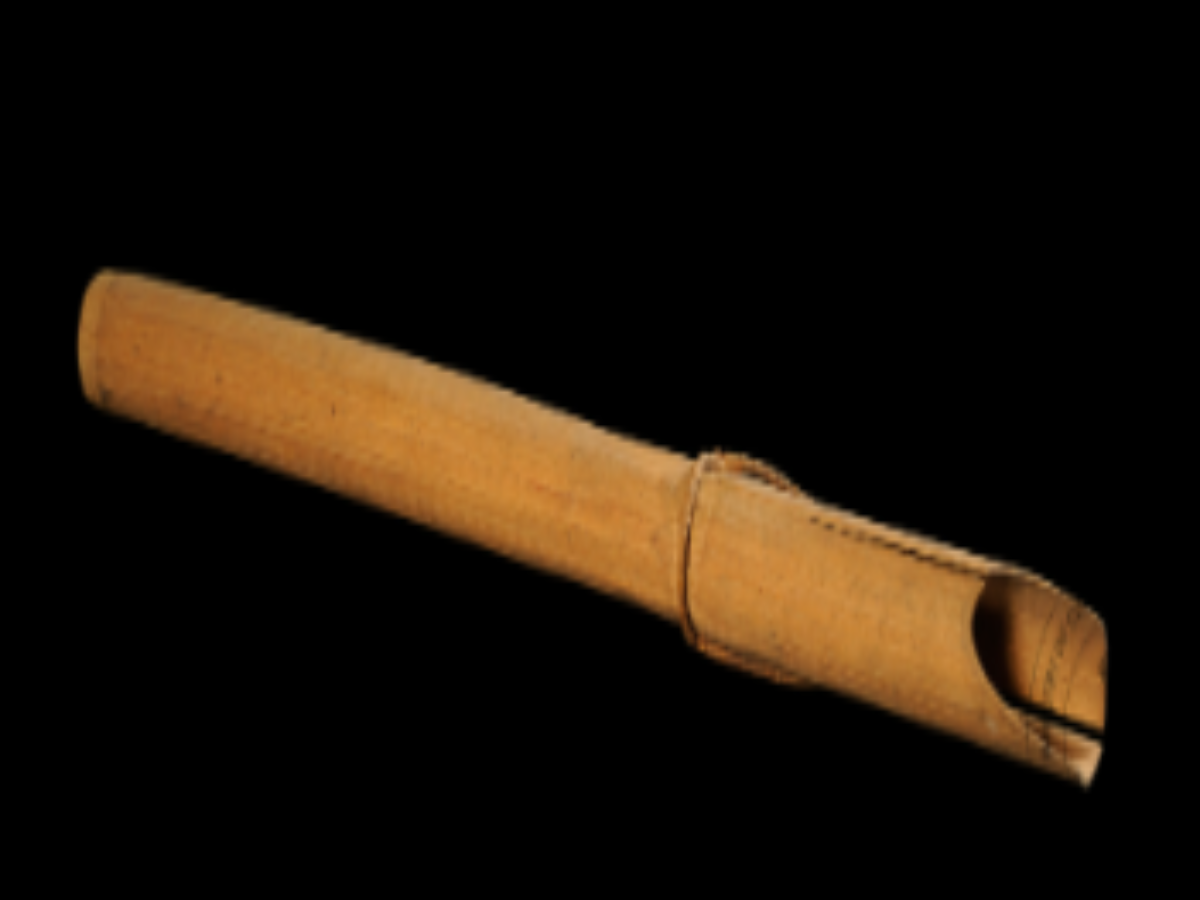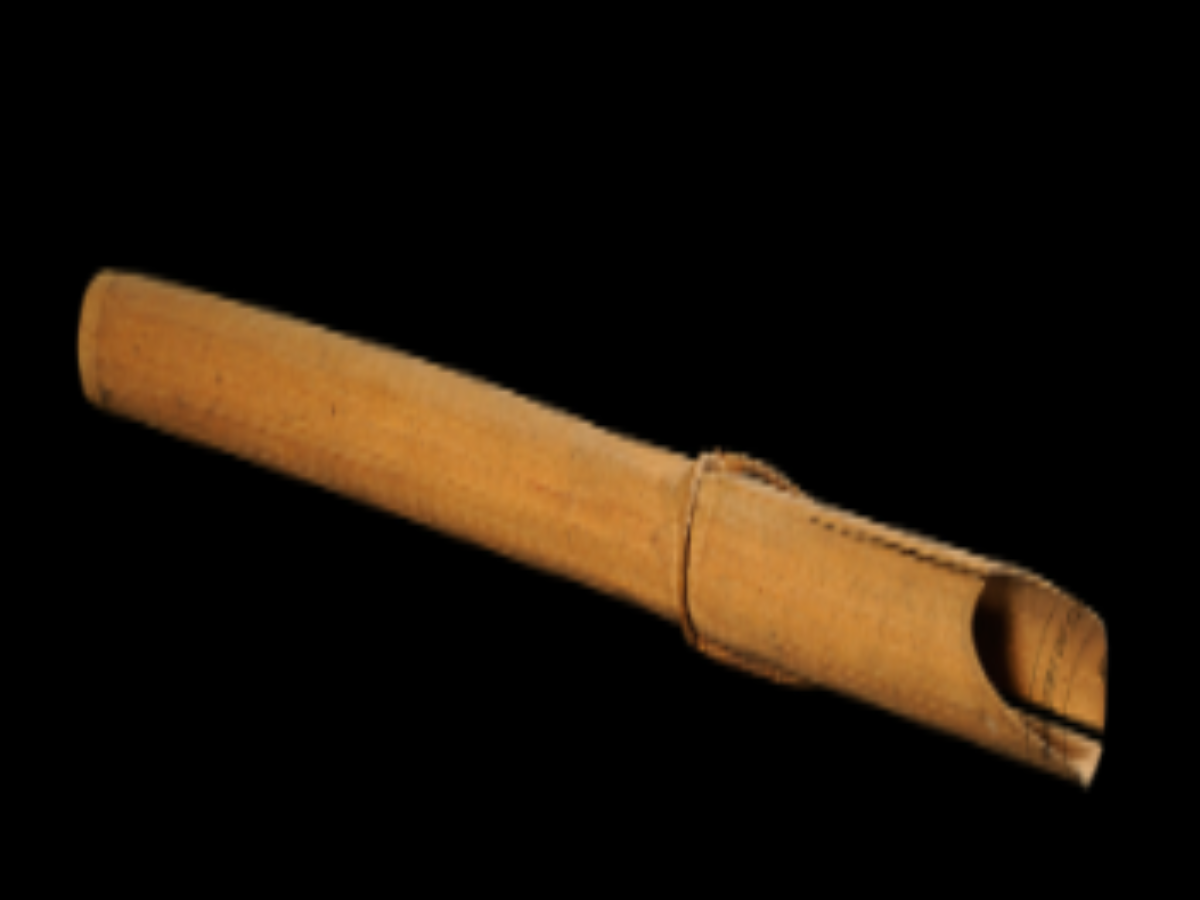State
Tribe Name
Art Type
short description
In its own right, this bamboo tube shows how resourceful and how eco-friendly the Mizo tribes are. Long hollow bamboo tube with closed ends through which water can be poured in or collected, with one natural closure in one end and the other open. A cane strap is wound round the body of the tube., tightly holding the object together and acting like either a handle or sling for controlling the movement of that tube, especially when moving long distances in hilly terrains. Traditionally, this kind of bamboo tube was also made use as a water carrier or container; it had its utopia in terms of daily existence, usually evident in a rural village where sources of water could be placed at quite a distance from the boma. The tube's cylindrical shape, along with its naturally waterproof characteristic, made it the best option for holding liquid. Lightweight but strong enough that both the sexes can easily carry several tubes with them, usually over their backs or shoulders.
Thumbnail

Filter Postion
Left
Filter Background
Off
Theme
Filter Header Image

content
Image

description
In its own right, this bamboo tube shows how resourceful and how eco-friendly the Mizo tribes are. Long hollow bamboo tube with closed ends through which water can be poured in or collected, with one natural closure in one end and the other open. A cane strap is wound round the body of the tube., tightly holding the object together and acting like either a handle or sling for controlling the movement of that tube, especially when moving long distances in hilly terrains. Traditionally, this kind of bamboo tube was also made use as a water carrier or container; it had its utopia in terms of daily existence, usually evident in a rural village where sources of water could be placed at quite a distance from the boma. The tube's cylindrical shape, along with its naturally waterproof characteristic, made it the best option for holding liquid. Lightweight but strong enough that both the sexes can easily carry several tubes with them, usually over their backs or shoulders.
The very nature of the design of this particular bamboo tube would indicate that, traditionally as every other aspect of Mizo life today, there was also sustainable living in their habitation; in the past the Mizo implanted local materials like bamboo and cane, perhaps not only for practical use, but also to keep their spiritual connection very alive with nature. Such artifacts are now being appreciated not only for their multifaceted utility but also for the fact that they have intrinsic cultural values and craftsmanship attached to them.
The very nature of the design of this particular bamboo tube would indicate that, traditionally as every other aspect of Mizo life today, there was also sustainable living in their habitation; in the past the Mizo implanted local materials like bamboo and cane, perhaps not only for practical use, but also to keep their spiritual connection very alive with nature. Such artifacts are now being appreciated not only for their multifaceted utility but also for the fact that they have intrinsic cultural values and craftsmanship attached to them.
Image Mode
landscape
promoted
On
Verified
Off
